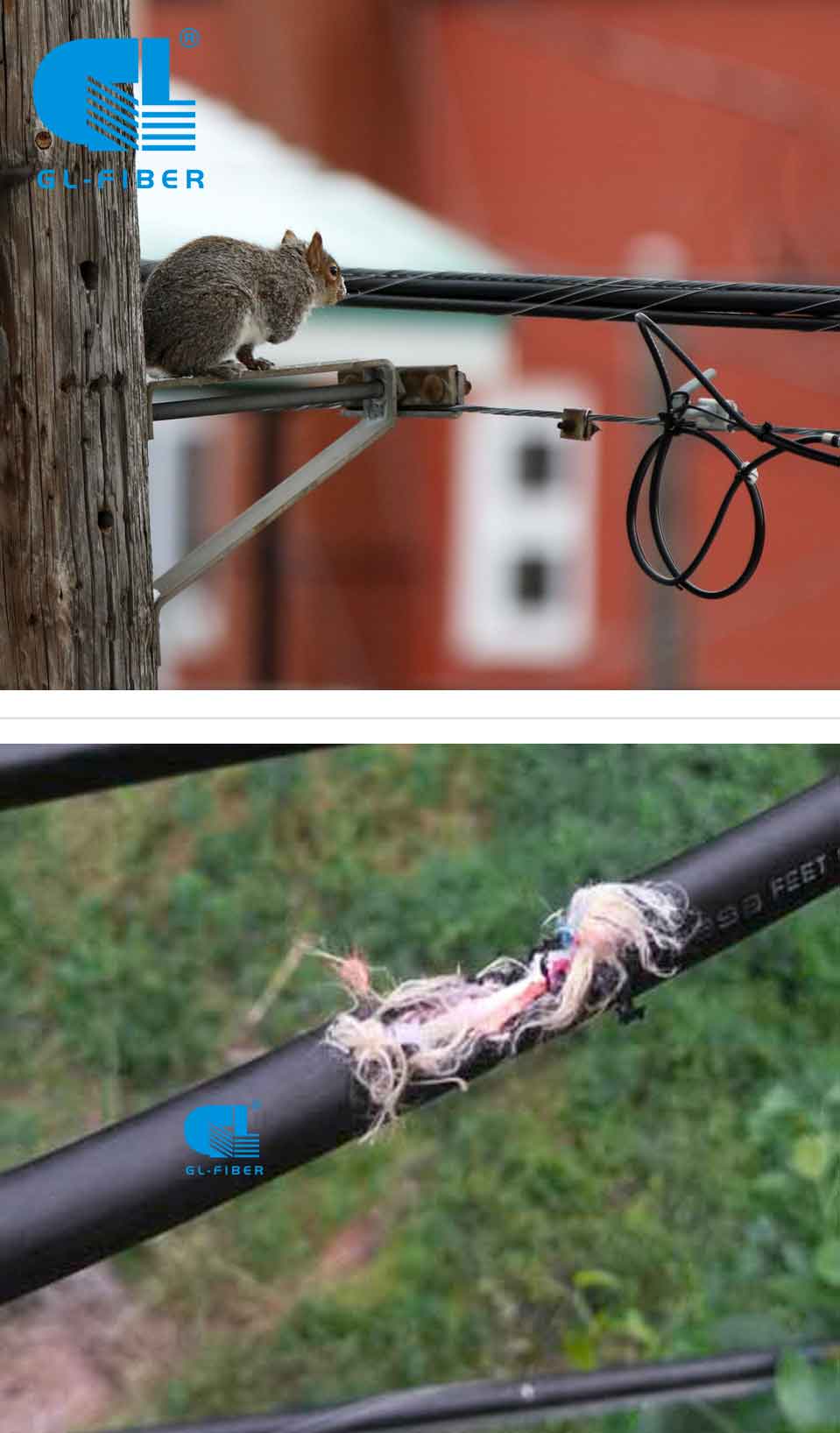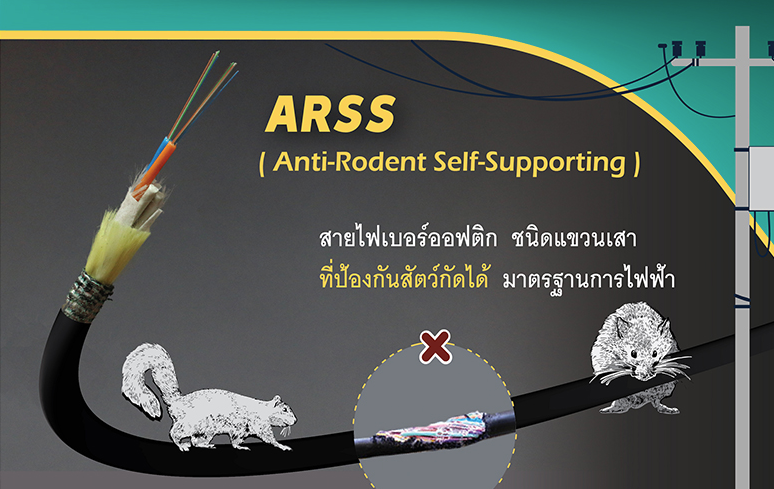Anti-rodent and anti-bird optical cables are specialized types of fiber optic cables designed to withstand damage or interference from rodents or birds in outdoor or rural environments.
Anti-Rodent Cables: Rodents, such as rats, mice, or squirrels, can be attracted to cables for nesting or chewing, causing significant damage to the fiber optic infrastructure. Anti-rodent cables are constructed with materials and designs specifically intended to deter or resist rodent damage. They might incorporate features like armored layers, rodent-resistant materials, or protective barriers that make it difficult for rodents to gnaw through the cable.
Anti-Bird Cables: Birds can also pose a threat to fiber optic cables, especially in rural areas or locations near bird habitats. They might perch on cables, peck at them, or cause damage by nesting. Anti-bird cables are designed with features to prevent birds from perching or causing damage. These cables might have specialized coatings or designs that discourage birds from landing or pecking at the cables.
Both anti-rodent and anti-bird cables aim to protect the fiber optic infrastructure from physical damage caused by these animals, ensuring the reliability and longevity of the network in outdoor or exposed environments. These cables are particularly useful in rural settings, along utility lines, or in areas where wildlife interference is a common issue.
Here are the methods currently used to prevent damage.
Cable Diameter. If the outer diameter is large enough, the rodent won’t be able to get its jaws around it. It’s the size alone that discourages gnawing the cable.
Steel Tape Armor. The next line of defense, underneath the cable sheath, are several armoring options. Steel tape armoring uses thin steel tape running the length of the cable. It is usually corrugated to allow improved flex to the cable. There can also be two layers of tape to add still more protection. Steel tape is lighter than the next option, steel wire armor.
Steel Wire Armor. This armoring is applied between the inner and outer sheath of the cable. It involves winding wire around the cable, which also imparts a high crush factor.
Steel Braid Armor. This is similar to wire armor but uses thin, soft steel wires formed into a braid. It’s best for small cable diameters and offers high flexibility and ease of installation.
FRP Armor. Fiberglass-reinforced polymer rigid elements are stranded around the cable, between the outer and inner sheathing. One advantage is that it is non-metallic and, therefore, is immune to induced voltage and lightning.Nylon Outer Sheath. The armor protection types above are all considered 100% protection from rodents. On the other hand, a thick outer sheath of Polyamide 12 nylon provides protection from rodents as well as termites, but for less rigorous conditions than armoring. It’s estimated to be around 75% effective.
Glass Yarns. These wrap around the cable and, while not preventing gnawing, it makes it exceedingly unpleasant. As a result, it’s more of a discouragement to the rodents than an out-and-out preventative.

Chemical Repellents. The typical additive is capsaicin, which is an irritant that causes a burning sensation for any mammal that comes into contact with it, including humans. This falls into the discouragement category rather than preventative. One downside is that the chemical additives can migrate out of the sheath over time.
If your requirements are already specified and ready for a quote, we are ready to meet your deadlines and pricing targets. Our extensive in-house services and advanced manufacturing capabilities are in place to meet your requirements. pls contact with sales or technical team online!


